There were a lot of sets released this year. 2022 almost certainly takes the record for the most Limited formats within one year. Unsurprisingly, this means there’s an enormous amount to review and discuss. Today, we’ll briefly go over all of these releases and how the year overall went.
Before we begin, let’s acknowledge the obvious: I have my own preferences and biases. A format I merely enjoyed might have been among your favorites, or a format I loved might have been awful for you. We all have different preferences. By listening to each other, we can learn things about the games, ourselves, and each other that we wouldn’t otherwise know.
I’m going to use each product as a lens to appreciate a lesson (or multiple lessons) from that set. I won’t be giving sets letter grades—I find they tend to be more provocative than informative. Some of these reviews will be much briefer, usually because I’ve written about the set in depth already. Others will be… less focused on the sets themselves. You’ll see. I’m using each product as a lens to appreciate a lesson, not reviewing each of them in detail. So with that said, let’s get started from the very beginning of 2022.
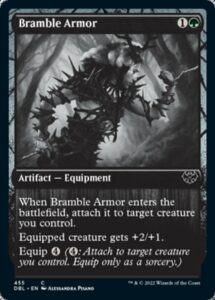
Innistrad: Double Feature
Innistrad: Double Feature was widely panned, and enough has been said about that. Instead, let’s talk about something that’s likely not controversial as regards Double Feature, but feels highly unusual in a Limited Year in Review: I never played Double Feature. Not in paper, not online, not once.
Almost exactly three years ago, I wrote This Product Is Not For You where I analyzed my newfound anxieties about Wizards making fewer things for players like me. That fear has not come to pass. There are elements of it, but it’s a story for another time. On the contrary, Magic is producing more sets for me annually than it’s ever been. However, there are also substantially more Magic products nowadays than there’s ever been before—enough sets that Wizards no longer needs (or wants) each set to be for everyone. Wizards expects players to self-select for the products they’re excited about, and disengage from those they aren’t.
In the past, every expansion was for me. If it came in a booster pack, I’d draft it. Sure, I enjoyed and drafted core sets less, but I tried everything out at least once. This was the year where it changed. With so many products coming out, I internalized “This product is not meant for you” and applied it to Limited. When a set didn’t interest me, I just skipped it. If my friends didn’t have good things to say about it, I never looked back. And while there’s an element of sadness to it, there’s still more Magic I do want to play than ever before. Starting the year off by completely ignoring a set laid the foundation for me to have a much healthier relationship with Magic than if I’d tried to engage with everything.
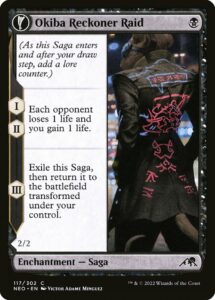
Kamigawa: Neon Dynasty
Neon Dynasty was the first premier expansion of the year, and it’s generally regarded as great, if not outright outstanding. It certainly was the most fun I’d had in a while, as neither of the two preceding Innistrad sets really did it for me. Adventures in the Forgotten Realms ranks among my least enjoyed Limited sets ever. I was fully prepared to mostly ignore Neon Dynasty, as all my associations with the plane were negative. Instead, Wizards delivered something magnificent—a great Limited format, an incredible reimagining of a world, and a jettisoning of everything which sank Kamigawa block in the first place. Many of these successes were first pioneered in 2018’s Dominaria, but some innovations were brand new, like how Neon Dynasty carefully minimized comprehension complexity despite being the wordiest set ever. All in all, the set was fabulous and I’ve picked up several boxes of it to draft over the next few years.
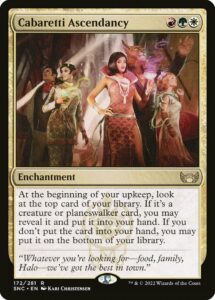
Streets of New Capenna
2022 is a year of seesawing. Double Feature was ignored. Kamigawa: Neon Dynasty ranked third in my top 10 Limited formats of the decade. Then, there was Streets of New Capenna. I had my doubts a day into the format. Within a couple days, I was done and dreading the record-breaking gap between Streets of New Capenna and Dominaria United. Streets of New Capenna joined AFR among my least favorite sets ever. I’d be concerned that Magic might be in for an era of wild swings in personal appeal, except it doesn’t seem like Streets of New Capenna is regarded as a wild success. That gives me optimism for having more NEOs going forward, and fewer SNCs.
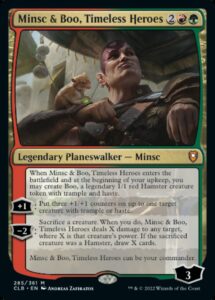
Commander Legends: Battle for Baldur’s Gate
I didn’t have fun with the original Commander Legends. I found its massive card gallery overwhelming, and I was too busy getting married to be able to play it during its brief window of availability. It was my second skip of the year, and I have no regrets there, either. I perused it for cube cards and otherwise left it alone, which is how I’ve treated every Commander product since their creation in 2011.
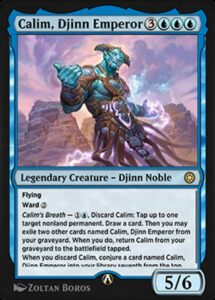
Alchemy Horizons: Battle for Baldur’s Gate
We’re five sets into 2022, and for the third time, I didn’t play this one. Unlike Double Feature, a lot of work clearly went into this set. Unlike Commander Legends, this was something new, not an iteration in a product line which past experience had taught wasn’t for me. Instead, several factors led to me self-selecting out of something I’d normally absolutely try. First, it was composed heavily out of AFR reprints (a set I had anti-nostalgia for) and CLB redesigns (a set I’d ignored). Second, I have a complicated relationship with Alchemy (it was introduced as a Constructed-only format, so I was used to ignoring it—more on that in a little bit). Third, the set looked complicated, wordy, and awkward, almost as though its developers were given insufficient time and resources. Fourth, I was burned out from both Streets of New Capenna and planning a wedding. I was less eager to try something new. And finally, initial word of mouth was very negative, as the set seemed to be both complicated and exacerbating many of AFR’s issues.
It’s a shame that Alchemy Horizons went the way that it did. If it had done better, I don’t think Wizards would be touting that next year’s Lord of the Rings set as one with zero Alchemy modifications. But it doesn’t sound like I missed an experience I’d have deeply enjoyed. I skipped it because it didn’t seem meant for me. It seems to have been a healthy choice, and it’s the biggest lesson I’ve gleaned from 2022—with so many products, it’s more important than ever to be selective in what I try out.
Moving Forward
And with this, we’ve reached the halfway mark for 2022. There’s been a lot to say about the 60% of the year where I didn’t play, but saw from the sidelines and learned from. Next week, we’ll be back with the second half of 2022 where (spoilers) I played almost everything. Until then, and as always, thanks for reading!
Zachary Barash (he/him) is a New York City-based game designer and the last commissioner of Team Draft League. He designs for Kingdom Death: Monster, has a Game Design MFA from the NYU Game Center, and does freelance game design. When the stars align, he streams Magic (but the stars align way less often than he’d like).

